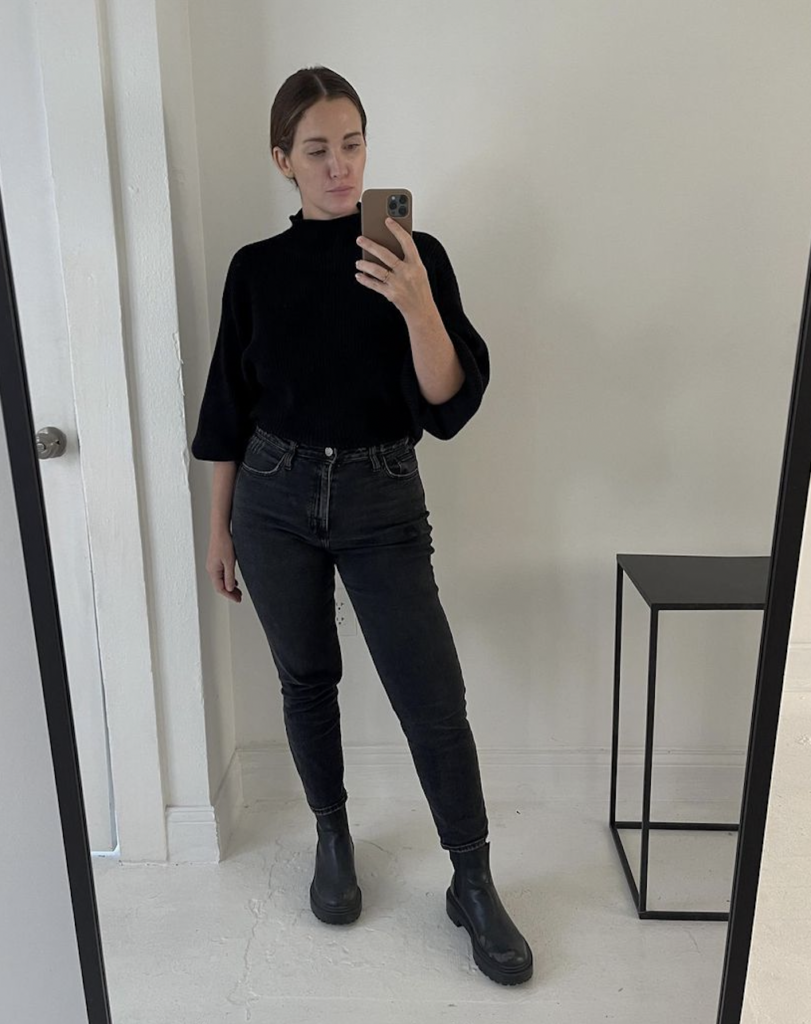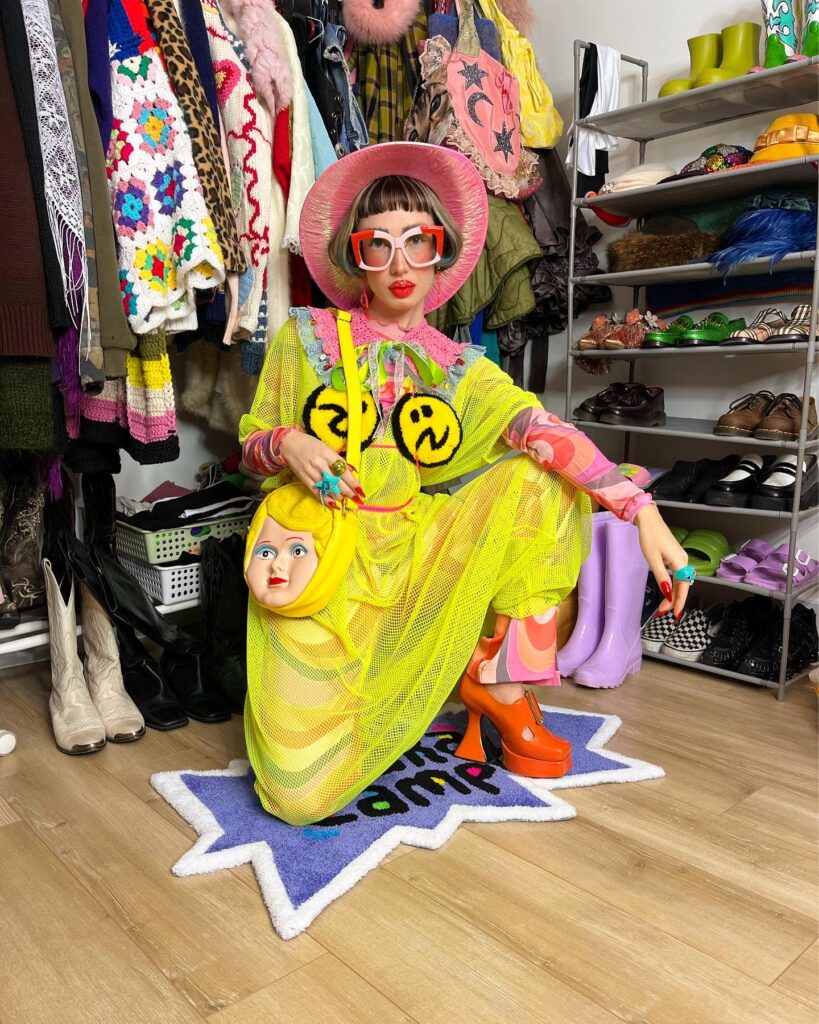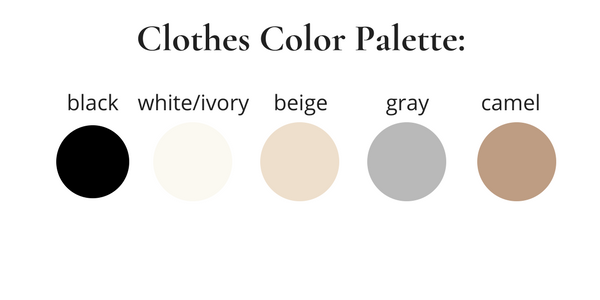

The “aesthetic” hashtag on Tik Tok has a staggering 172 billion views. An aesthetic in the digital sense of the word refers to a visual representation of an internet subculture that portrays a certain mood, community, or persona through fashion, decor, color palettes, mood boards, and more (Freeman 2021). Two aesthetics, #Minimalism and #Maximalism, have over 1.5 billion and 500 million views respectively, not counting the hashtags of their subgenres. Although opposites, minimalism and maximalism have proven themselves to be simultaneous front-runners in the world of internet aesthetics and reflect the many factors that cause internet trends to emerge.
What is #Minimalism?
In terms of both decor and fashion, the minimalist movement of the 2000s and 2010s is expressed through monochromatic color palettes, sleek silhouettes, sustainable living, decluttering, and overall having less “stuff” to feel more free and fulfilled (Park 2012). Functionality and simplicity are its core values. This movement is a critical response to the awareness of our overwhelming capitalist and materialistic society (Wilson and Bellezza 2021).
What is #Maximalism?

Maximalism in consumer culture is characterized by excessiveness in bright colors and amount of clothing, often oversized silhouettes, opulence, creativity, abstraction, and originality (Park 2012). Usually, everything worn in a maximalist outfit could be its own statement piece. Although the term, like minimalism, was originally coined in terms of visual art, maximalism has recently developed a resurgence as a fashion and decor aesthetic, particularly on social media.
Maximalism is a broad term that encompasses many aesthetics. For example, in order to acquire the cottage-core aesthetic (which represents an idealized image of countryside living), one should buy floral dresses with puffy sleeves, wear earth tones, don natural makeup, and have a fashion and decorating style that reflects a closeness with nature (Freeman 2021). The latter includes collecting and displaying objects that also reflect the aesthetic like plants, flowers, and books. While minimalism can also encourage acquiring a specific look, this notion of buying, wearing, collecting, and displaying “stuff” is fundamental to the concept of maximalism and in direct opposition to the foundation of minimalism.
Aesthetics and Community
Confined to quarantine in the wake of the COVID-19 pandemic in 2020 and 2021, many took to the internet to find solace and community (Goel and Gupta 2020). Internet communities have increasingly formed around aesthetic niches, encouraging others to take part in them. Participating in these communities can be done from home by buying things online and creating content around aesthetics on a phone without having to go anywhere. While minimalism also spiked in popularity during the pandemic with people being inspired to declutter the place they were inhabiting so much of the time, as did this new notion of self-expression. Using the internet, people around the world could share what they were passionate about and find like-minded individuals to communicate with. Once a niche has gained some traction, the aesthetic perpetuates itself as the fear of missing out phenomenon compels consumers to buy more in order to better cultivate their aesthetic look. The pandemic also widely instilled this fear of death that made people want to enjoy their life to the fullest, rather than restrain themselves as minimalism encourages (Liu, Dalton, and Lee 2021).
Aesthetics vs. Sustainability
It is interesting to note that the primary participants in the maximalism aesthetic, young adults active on social media platforms, have been associated with highly anti-consumerist, anti-capitalistic, and eco-conscious ideals (Volpe 2022). Minimalism, which is inherently anti-capitalistic, naturally grew out of these ideals. One reason maximalism has been able to gain fame in the face of anti-capitalist rhetoric and the prominence of minimalism is that thrifting, making things at home, and sustainable shopping have all become popular in alignment with environmentalism (Watkins 2019). Many maximalist influencers showcase their thrifted or handmade finds and discourage fast fashion purchases (Pizza 2022).
Cognitive dissonance also plays a role as the value of self-expression is deemed more important than the hypocrisy of the materialistic maximalist (Park 2012). For example, it has become more acceptable people to buy from fast fashion brands out of necessity, as it is the most economic way to get some items. Furthermore, our severely eco-conscious generation has become more accepting of some unsustainable practices when they are offset with sustainable ones (Lily 2021). Affordability and giving oneself the freedom of expression can be perceived as more important than one’s individual detriment against environmentalism.
This shift in our values, first being simplicity, as evidenced by minimalism, and later expressiveness, as evidenced by maximalism, shows the variety in responses of a young generation troubled in an overwhelming world.
Trends = Values
Cultural trends change with social movements and global events. Fashion aesthetics in particular indulge the human desire to classify themselves and be a part of a community as well as express the current values in our society from the fresh perspective of the youth. The shift from minimalism to maximalism is not a regressive encouragement of capitalism but rather the result of a growing emphasis on self-expression over restraint.
My Minimalist and Maximalist Outfits
A TikTok (the primary social media app for aesthetic communities) contrasting a monochromatic minimalist outfit with a creative maximalist outfit featuring a handmade crochet cardigan, crochet bucket hat, and fast fashion shoes and jewelry. Words representing the qualities and values of each aesthetic are present behind each outfit.
References
Freeman, Katie. 2021. “Your Guide to Internet Aesthetics in 2021 | The Butler Collegian.” Retrieved October 17, 2022 (https://thebutlercollegian.com/2021/02/your-guide-to-internet-aesthetics-in-2021/).
Goel, Ashish and Latika Gupta. 2020. “Social Media in the Times of COVID-19.” JCR: Journal of Clinical Rheumatology 26(6):220-223.
Lily. 2021. “Is it Okay to Buy Fast Fashion?” Retrieved December 5, 2022 (https://imperfectidealist.com/is-it-okay-to-buy-fast-fashion/)
Liu, Jingshi, Amy N. Dalton and Jeremy Lee. 2021. “The ‘Self’ under COVID-19: Social Role Disruptions, Self-Authenticity and Present-Focused Coping.” PLOS ONE 16(9).
Park, Eun Kyung. 2012. “A Comparative Study on Minimalism and Maximalism in the 2000s Fashion.” The Korean Society of Costume 62(8):100-117.
Pizza, Angelica. 2022. “Sustainable Maximalism *Is* Possible—and This Designer Is Proof ..” Retrieved November 4, 2022 (https://brightly.eco/blog/what-is-sustainable-maximalism).
Volpe, John Della. 2022. Fight: How Gen Z Is Channeling Their Fear and Passion to Save America. St. Martin.
Watkins, Amanda. 2019. “Environmental Engagement and Generation Z..” Retrieved October 17, 2022 (https://uwspace.uwaterloo.ca/handle/10012/15248).
Wilson, Anne V and Silvia Bellezza. 2021. “Consumer Minimalism.” Journal of Consumer Research 48(5):796-816.
